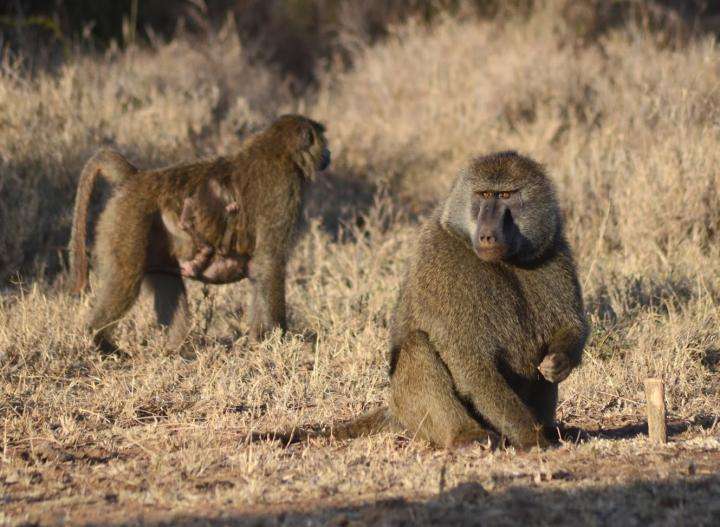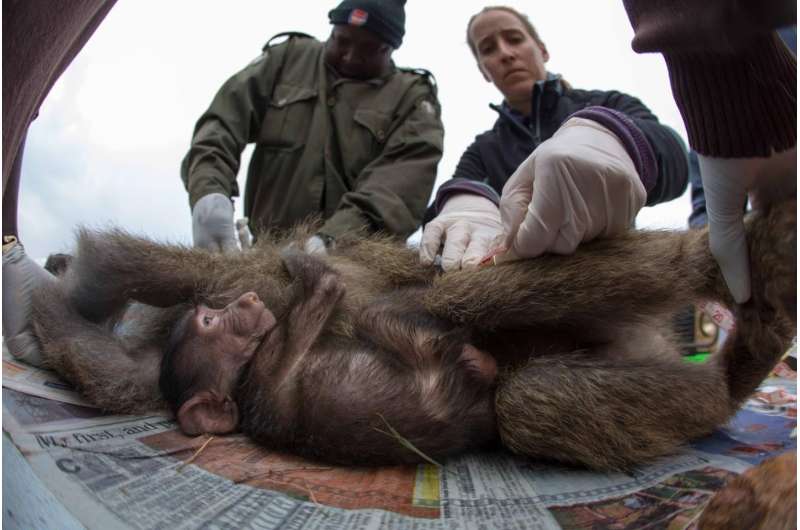Wallflower center pack baboons find place

Are you the kind of person who, at a party, tends to be surrounded by friends in the middle of the crowd, or do you prefer to find a quiet corner where you can sit and talk? Recent work by scientists at UC Davis shows that wild baboons behave similarly to humans—with some animals consistently found in the vanguard of their troop while others crowd to the center or lag in the rear.
Using high-resolution GPS tracking, UC Davis Assistant Professor Margaret Crofoot and her team of researchers continuously monitored the movements of nearly an entire baboon troop in central Kenya to discover how interactions among group-mates influenced where in the troop individuals tended to be found.
"How animals position themselves within their social group can have life or death consequences," explained Crofoot, an anthropologist. "Individuals at the front of their group may get the first crack at any food their group encounters, but they are also more vulnerable to being picked off by predators."
Interestingly, the team's work suggests that very simple behavioral rules may explain baboons' apparent preferences for particular spatial positions. "Animals who pay attention to more of their group-mates when deciding where to move will inevitably end up at the center of their group," said Crofoot. Differences in social sensitivity may therefore explain why younger baboons end up in the safest positions at the center of their troop, while adult males find themselves exposed on the leading edge.
Researchers have long noted that spatial positioning has important fitness implications, but where an animal is positioned in its group depends not only on its own behavior, but also on the behavior of its group-mates. "How natural selection shapes such emergent properties is fundamental to understanding the evolutionary dynamics of social organisms," Crofoot said.

More information: D. R. Farine et al. Individual variation in local interaction rules can explain emergent patterns of spatial organization in wild baboons, Proceedings of the Royal Society B: Biological Sciences (2017). DOI: 10.1098/rspb.2016.2243
Journal information: Proceedings of the Royal Society B
Provided by UC Davis





















